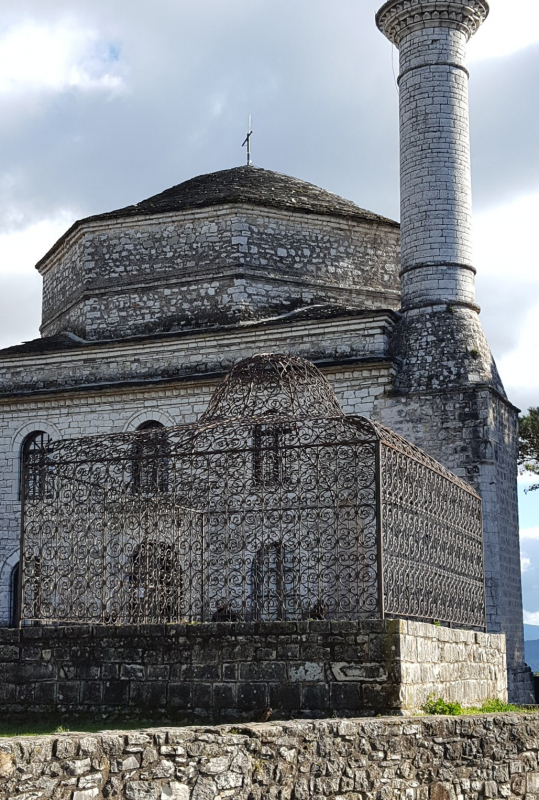In 1788, Ali Pasha, the ruler of Ioannina, laid the foundations for his palace (saray) in a prominent position within the castle walls. From here he could look out towards the lake. Foreign visitors were impressed since the palace was equipped with courtyards, baths, servants, and luxurious apartments for Ali and his family. The main reception hall was adorned with Byzantine columns and chaise longues made by Gobelins in Paris. The end of Ali Pasha, who dared to defy the Ottoman Sultan, also marked the end of the saray. It became an administrative center and when it was destroyed by fire in 1870, it was replaced by a military hospital. This was also demolished to make way for a Royal Kiosk in 1958. Today it houses the Byzantine Museum of Ioannina.

4. The era of Ali Pasha
Ioannina truly flourished under Ali Pasha, the ruthless ruler whose ambition knew no bounds. The citadel was transformed into a separate fortress were Ali built a palace for himself and his 500 women.
Stories
The palace of the pasha
The lion tamer
In 1805 Ali Pasha, the ruthless “lion of Ioannina”, met a woman who tamed his heart. Her name was Vassiliki, she was Greek, and barely 15 or 16 years old. According to the legend, Vassiliki met with Ali to intercede for her family. He saw her and was so impressed by her beauty that he kept her in his harem. There were more than 500 women there but in 1813 Ali declared that she was the only official one. He educated her, allowed her to remain a Christian and refused her nothing. She was even allowed to roam the saray freely, contrary to custom. She remained faithful to him forever and only left the palace when he died.
Conquest or surrender?
In 1430 Epirus suffered greatly from the rivalry of local rulers. One of them decided to ask for help from the Ottomans in the hope of prevailing over the others. Sultan Murad II did not hesitate; he dispatched his general, Sinan Pasha, to lay siege to Ioannina. Before the hostilities began, though, the people of Ioannina were ordered to surrender. The local nobles agreed and all residents, whether Christians or Jews, survived and secured numerous privileges. The Ottomans celebrated their new conquest by erecting a temporary wooden mosque in the Castle. They called it Fethiye Mosque (Conquest Mosque) but perhaps Surrender Mosque would be more apt.
A new religion
Before the Ottoman conquest, the southeast corner of the Castle was reserved for the mansions of the local noble families and the cathedral, dedicated to Archangel Michael. When the Ottomans occupied Ioannina, they allowed the Christians to keep their church and their religious practices, placing their own mosque near the church. In 1611, following the unsuccessful uprising of Dionysios, the Christians lost their privileges and were removed from the castle. The church soon fell into disrepair, while the mosque was rebuilt in stone, with a lead roof and an elegant minaret. Ali Pasha renovated the mosque in order to compliment his luxurious palace; during construction he also discovered the ruins of the Church of the Archangel. It seems likely that the two marble pieces adorned with flowers that were placed in the mihrab of the Fethiye Mosque came from the ruined church.
Powered by Clio Muse Tours